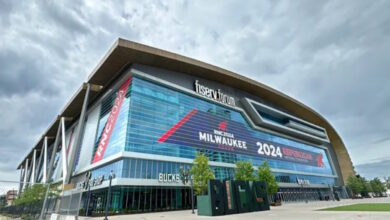The White House: An Emblem of American Democracy
The White House, the official residence and principal workplace of the President of the United States, is a symbol of the American government’s executive branch and a globally recognized emblem of the presidency. Located at 1600 Pennsylvania Avenue NW in Washington, D.C., it has been the residence of every U.S. president since John Adams in 1800. This article explores the history, architecture, and significance of this iconic building.
History
The White House’s construction began in 1792 and was overseen by James Hoban, an Irish-born architect who won the design competition proposed by President George Washington and Secretary of State Thomas Jefferson. Inspired by neoclassical motifs, its design reflects the democratic ideals and classical roots of the United States. The White House was first occupied by President John Adams and his wife, Abigail, in 1800, although it was not completed until 1801.
Throughout its history, the White House has undergone numerous renovations, additions, and restorations. It was set on fire by British troops during the War of 1812, an event that led to extensive rebuilding. The West Wing was added in 1901 under President Theodore Roosevelt to accommodate the growing needs of the presidency, and the Oval Office, the president’s formal workspace, was created in 1909 under President William Howard Taft.
Architecture
The White House is an example of Federal-style architecture, a variation of neoclassical design that emerged in the United States in the late 18th century. It is characterized by its white-painted Aquia Creek sandstone exterior, columned porticoes, and classical detailing. The building has four floors and more than 130 rooms, including the famous Oval Office, State Dining Room, and the East Room, which is used for large receptions and ceremonies.
The grounds of the White House cover approximately 18 acres and include the Rose Garden, South Lawn, and the North Portico, which serves as the official entrance. The complex also features the Executive Residence, West Wing, East Wing, the Eisenhower Executive Office Building, and the Blair House, a guest residence.
Significance
The White House serves multiple functions: it is the official residence of the president and their family, a working office space for the president and their staff, and a venue for state ceremonies and official entertaining. It is also an important symbol of the U.S. government’s executive branch and American democracy.
Beyond its political and functional roles, the White House is a museum of American history and art, containing an extensive collection of fine and decorative arts, including historic furnishings, portraits of past presidents and first ladies, and works by prominent American artists.
Public Access and Tours
The White House is open to the public through guided tours, although reservations are required and can be obtained through one’s Congressional representative. The White House Visitor Center, located nearby, offers exhibits about the White House and the presidential families who have lived there.
Conclusion
The White House stands as a testament to American history, democracy, and architectural grandeur. It continues to function as the seat of the presidency, a living museum, and a symbol of the nation to the world. Its walls have witnessed countless historical events and decisions that have shaped the United States and the global landscape.




